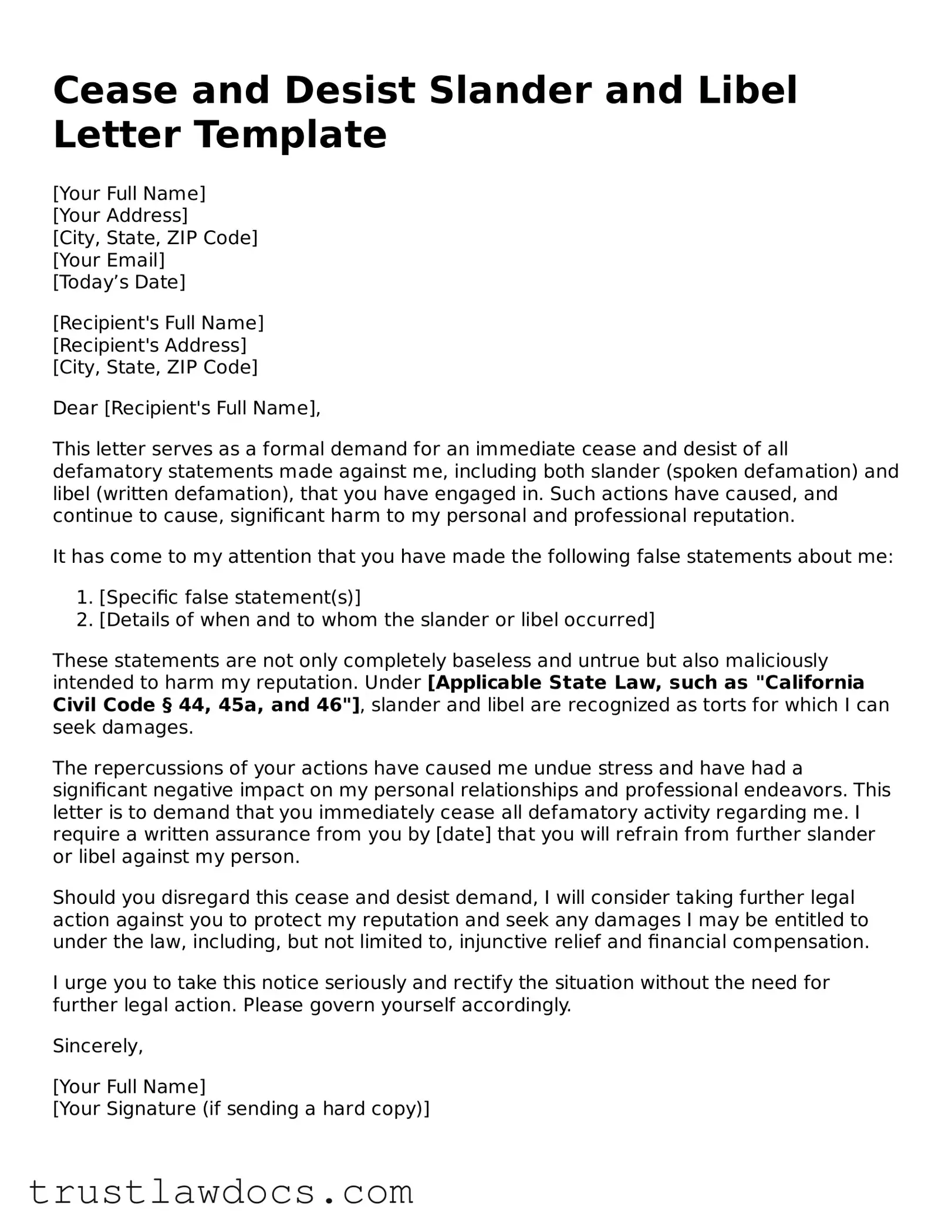Cease and Desist Slander and Libel Letter Template
[Your Full Name]
[Your Address]
[City, State, ZIP Code]
[Your Email]
[Today’s Date]
[Recipient's Full Name]
[Recipient's Address]
[City, State, ZIP Code]
Dear [Recipient's Full Name],
This letter serves as a formal demand for an immediate cease and desist of all defamatory statements made against me, including both slander (spoken defamation) and libel (written defamation), that you have engaged in. Such actions have caused, and continue to cause, significant harm to my personal and professional reputation.
It has come to my attention that you have made the following false statements about me:
- [Specific false statement(s)]
- [Details of when and to whom the slander or libel occurred]
These statements are not only completely baseless and untrue but also maliciously intended to harm my reputation. Under [Applicable State Law, such as "California Civil Code § 44, 45a, and 46"], slander and libel are recognized as torts for which I can seek damages.
The repercussions of your actions have caused me undue stress and have had a significant negative impact on my personal relationships and professional endeavors. This letter is to demand that you immediately cease all defamatory activity regarding me. I require a written assurance from you by [date] that you will refrain from further slander or libel against my person.
Should you disregard this cease and desist demand, I will consider taking further legal action against you to protect my reputation and seek any damages I may be entitled to under the law, including, but not limited to, injunctive relief and financial compensation.
I urge you to take this notice seriously and rectify the situation without the need for further legal action. Please govern yourself accordingly.
Sincerely,
[Your Full Name]
[Your Signature (if sending a hard copy)]
